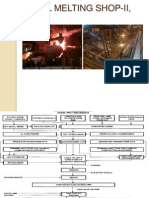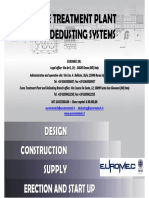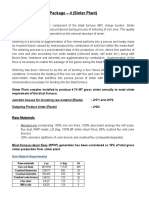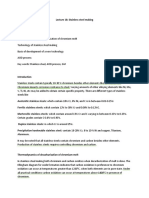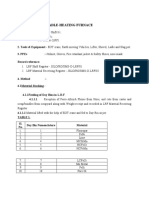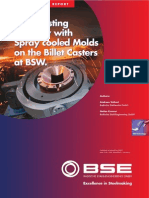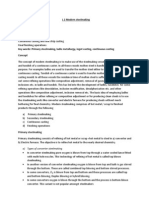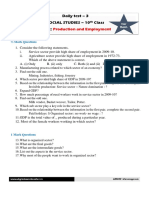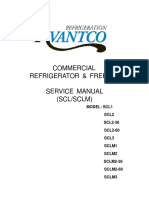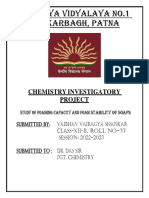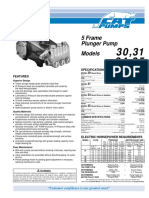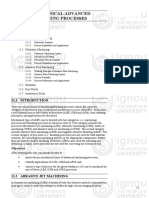0% found this document useful (0 votes)
2K views7 pagesSms Process
The document describes the steel melting and refining processes at a steel plant. It includes:
1) An electric arc furnace for melting scrap, hot metal, and sponge iron and removing impurities.
2) A ladle furnace that further refines the steel through alloy additions and inert gas purging.
3) A vacuum degassing unit that removes hydrogen, nitrogen, and allows for precise chemistry adjustments.
4) A converter and refining process for producing stainless steel to tight specifications through decarburization, reduction, and trimming phases.
Uploaded by
Anonymous p4GdtQpCopyright
© © All Rights Reserved
We take content rights seriously. If you suspect this is your content, claim it here.
Available Formats
Download as DOC, PDF, TXT or read online on Scribd
0% found this document useful (0 votes)
2K views7 pagesSms Process
The document describes the steel melting and refining processes at a steel plant. It includes:
1) An electric arc furnace for melting scrap, hot metal, and sponge iron and removing impurities.
2) A ladle furnace that further refines the steel through alloy additions and inert gas purging.
3) A vacuum degassing unit that removes hydrogen, nitrogen, and allows for precise chemistry adjustments.
4) A converter and refining process for producing stainless steel to tight specifications through decarburization, reduction, and trimming phases.
Uploaded by
Anonymous p4GdtQpCopyright
© © All Rights Reserved
We take content rights seriously. If you suspect this is your content, claim it here.
Available Formats
Download as DOC, PDF, TXT or read online on Scribd
/ 7







